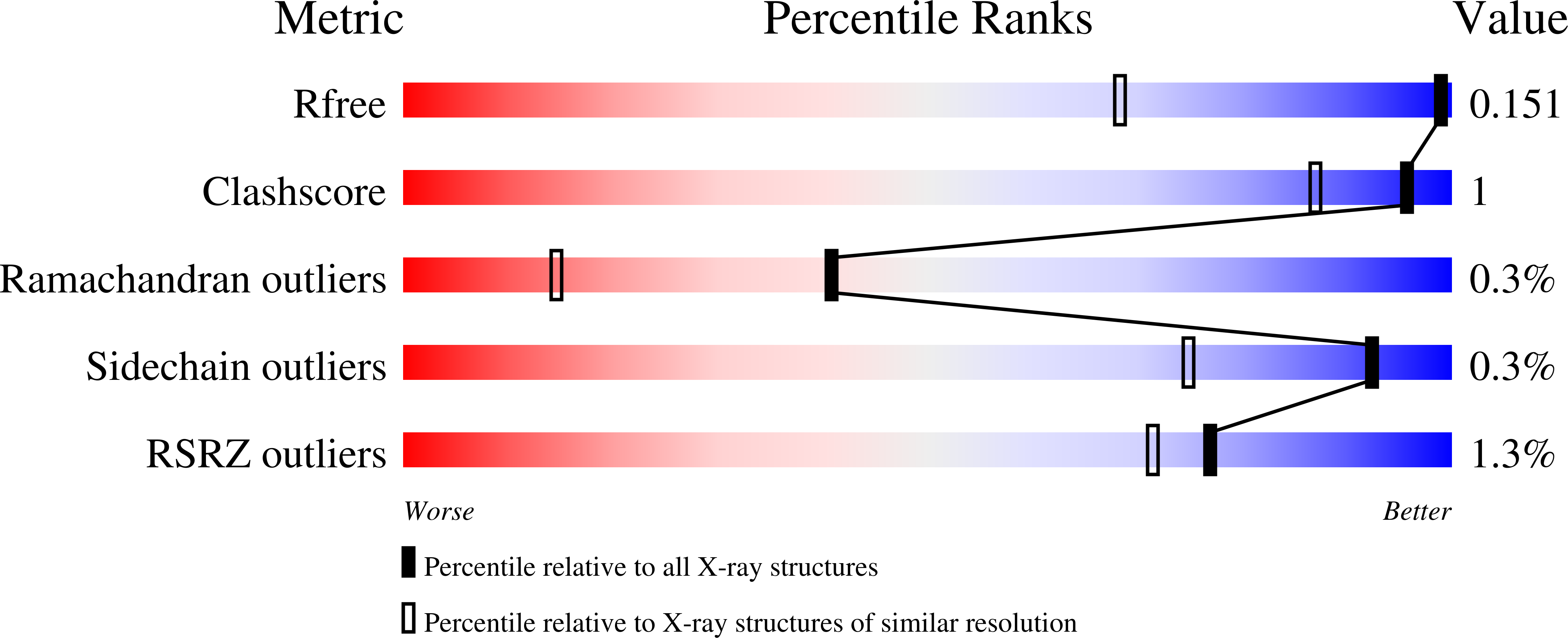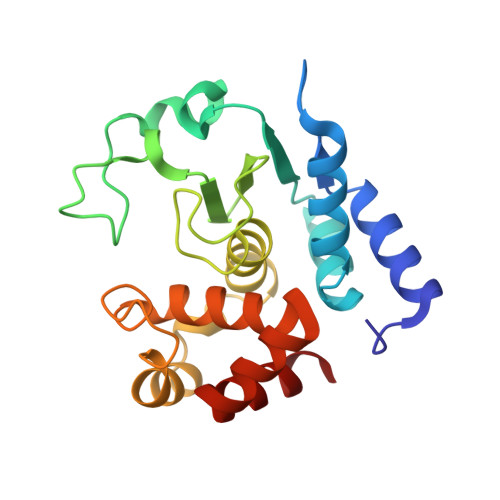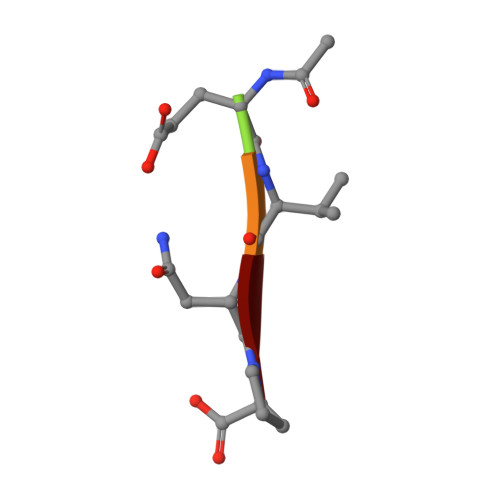Molecular determinants of the mechanism and substrate specificity ofClostridium difficileproline-proline endopeptidase-1.
Pichlo, C., Juetten, L., Wojtalla, F., Schacherl, M., Diaz, D., Baumann, U.(2019) J Biol Chem 294: 11525-11535
- PubMed: 31182482
- DOI: https://doi.org/10.1074/jbc.RA119.009029
- Primary Citation of Related Structures:
6R4W, 6R4X, 6R4Y, 6R4Z, 6R50, 6R51, 6R52, 6R53, 6R54, 6R55, 6R56, 6R57, 6R58, 6R59, 6R5A, 6R5B, 6R5C, 6R9Z - PubMed Abstract:
Pro-Pro endopeptidase-1 (PPEP-1) is a secreted metalloprotease from the bacterial pathogen Clostridium difficile that cleaves two endogenous adhesion proteins. PPEP-1 is therefore important for bacterial motility and hence for efficient gut colonization during infection. PPEP-1 exhibits a unique specificity for Pro-Pro peptide bonds within the consensus sequence VNP¡ýPVP. In this study, we combined information from crystal and NMR structures with mutagenesis and enzyme kinetics to investigate the mechanism and substrate specificity of PPEP-1. Our analyses revealed that the substrate-binding cleft of PPEP-1 is shaped complementarily to the major conformation of the substrate in solution. We found that it possesses features that accept a tertiary amide and help discriminate P1' residues by their amide hydrogen bond-donating potential. We also noted that residues Lys-101, Trp-103, and Glu-184 are crucial for proteolytic activity. Upon substrate binding, these residues position a flexible loop over the substrate-binding cleft and modulate the second coordination sphere of the catalytic zinc ion. On the basis of these findings, we propose an induced-fit model in which prestructured substrates are recognized followed by substrate positioning within the active-site cleft and a concomitant increase in the Lewis acidity of the catalytic Zn 2+ ion. In conclusion, our findings provide detailed structural and mechanistic insights into the substrate recognition and specificity of PPEP-1 from the common gut pathogen C. difficile .
Organizational Affiliation:
Department of Chemistry, Institute of Biochemistry, University of Cologne, 50674 Cologne, Germany.

















